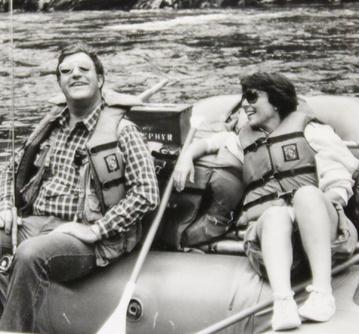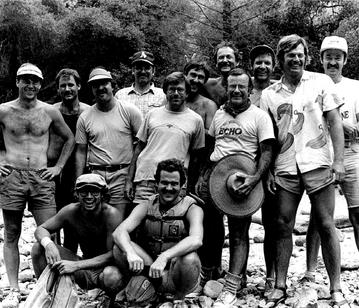
1 minute read
Winning Wild & Scenic Protection
The successful campaign to save California’s Tuolumne River through the Wild and Scenic Rivers Act has been described as the greatest victory in the history of the Wild and Scenic Rivers system and one of the greatest conservation achievements of the century. The effort was the result of hard work and the assembly of unlikely allies, from commercial whitewater outfitters, private boaters, and anglers, to businesses and politically diverse proponents in Congress The permanent protection of the River under the National Wild and Scenic Rivers System was the culmination of sixteen years of diligence, persistence, and collaboration
Our origins are rooted in advocacy that ultimately secured a section of the River from further development We now enjoy the benefits of that labor on whitewater trips, fishing, hiking, and other activities As the needs of our communities and the environment continue to evolve due to competing demands and climate pressure, our advocacy has also evolved, shaping our work into the present day.
Advertisement
San Francisco announced the Clavey Wards Ferry Project, a proposal to construct up to 4 dams on the Tuolumne, Clavey, North Fork Tuolumne, and South Fork Tuolumne, primarily for hydroelectric power.
1969
On a flat rock near Lumsden Bridge, the Sierra Club established a task force named the Tuolumne River Conference. Their goal was to gain protection for the Tuolumne River under the Federal Wild & Scenic Rivers Act, which had been signed into law the prior year by President Johnson.


1979
The Stanislaus National Forest completed the Wild & Scenic River eligibility study, which favored protection over dams and determined that the Tuolumne River is “eligible” for designation as a Wild and Scenic River, creating a strong basis for protection. As required under the Wild and Scenic Rivers act, the determination initiated a three-year ban on development while Congress considered the report’s recommendations
1981
With less than one year of Wild and Scenic study protection remaining, a diverse group of Tuolumne lovers joined together to create the Tuolumne River Trust, then known as the Tuolumne River Preservation Trust.
1982
The Wild and Scenic Study protection for the Tuolumne expired. San Francisco and the Modesto and Turlock Irrigation Districts recommitted to the Clavey Wards Ferry dam-building project irregardless of public opposition
1983
The “T” was named “the most endangered river in the country ” TRT inspired a highly successful media campaign and generated letters from diverse interests supporting the “T” to freshman Senator Pete Wilson -more than any other issue before Congress. Senator Wilson’s support came on top of support from Senator Alan Cranston and Congressman Rick Lehman and was considered the final support needed to make its passage possible.
1984
After 16 years of organizing, Congress approved Wild & Scenic status for the Tuolumne, and Ronald Reagan signed it into law. Victory had been won!










